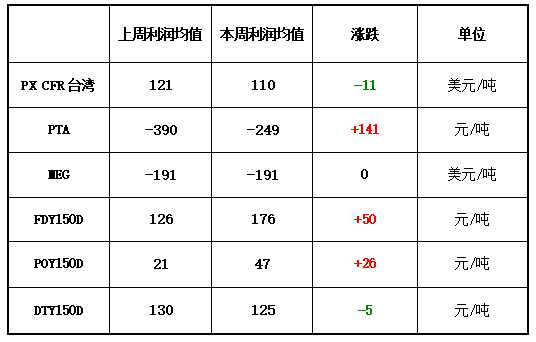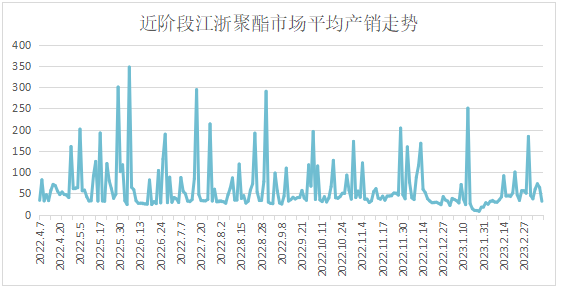In 2023, world economic risks will explode. Many banks in the United States have collapsed one after another. Credit Suisse Group in Europe has also been affected. The lack of market confidence has caused international oil prices to plummet, and foreign trade demand has also been sluggish. But at this time, there can also be some bright spots in the textile industry, among which outdoor products are one.
Next, let’s look down to understand the market dynamics of the week.
Silicon Valley bank collapses, Credit Suisse Group tumbles
Silicon Valley Bank announced the failure of its financing plan, becoming the first insured banking institution to fail in the United States this year. The liquidity crisis has triggered widespread panic among investors and savers, and the market is worried that it will be transmitted to the US financial system and even lead to a recurrence of the financial crisis.
According to a report by Bloomberg on March 14, Credit Suisse Group’s annual report released that day stated that “significant deficiencies” were found in the reporting procedures for the 2022 and 2021 fiscal years. Affected by this, Credit Suisse’s share price plummeted. Coupled with the recent thunderstorms at Silicon Valley Bank, banking stocks fell collectively. Credit Suisse’s share price has fallen by 12.4% since March 9.
The editor has something to say: Many large institutions in the United States and Europe have experienced problems one after another, and global financial risks have intensified.
International oil prices plummeted 10%
Since this week, international oil prices have fallen sharply, hitting a new low since December 2021. On Wednesday, WTI April crude oil futures closed at US$67.61 per barrel, a decrease of 5.22%, and Brent May crude oil futures closed at US$73.69 per barrel, a decrease of 4.85%. As of 7 p.m. on the 16th, New York oil prices had fallen by more than 11% this week, and Brent oil prices had fallen by more than 10% this week.
The editor has something to say: The short-term plunge in crude oil reflects the lack of market confidence.
Exports from many countries plunged by double digits in January
Due to the impact of reduced orders from the European and American markets, nearly 500 factories in Cambodia closed down and 60,000 people lost their jobs. Heng Sok, spokesman for the Cambodian Ministry of Labor, revealed that most of the factories that closed down or stopped production were garment factories, mainly due to reduced orders from the US and EU markets and a lack of raw materials. He said that weak demand in European and American markets has become an important trend affecting the global economy. In addition, the previous COVID-19 epidemic and the uncertainties caused by the Russia-Ukraine conflict have affected the consumption willingness of European and American countries.
The editor has something to say: The recent demand for foreign trade is worrying.
Orders for camping products are booming
Data show that in February, orders for booking camping products increased by 75% year-on-year. In the past two weeks, the number of searches related to “camping” on the Meituan platform increased by 450% year-on-year.
Among them, Chengdu, Guangzhou, Shenzhen, Shanghai, Chongqing, Hangzhou, Beijing, Nanjing, Wuhan and Kunming have become the most popular cities for camping in the country.
Statistics show that there are currently more than 34,000 tent-related companies in China, mainly distributed in Zhejiang, Guangdong and Jiangsu. The total number of related companies in the three provinces accounts for about one-third of the country’s total.
Industry authority estimates indicate that the overall size of the domestic camping market is expected to reach 178.14 billion yuan in 2023, and the core market size will reach 248.32 billion yuan by 2025, driving the market size to 1.44 trillion yuan.
The editor has something to say: The blue ocean in the industry still exists.
Market Review
Polyester:
Since this week, international oil prices have fallen sharply, hitting a new low since December 2021. Industry insiders believe that the Silicon Valley banking crisis and the Credit Suisse turmoil triggered market panic about systemic risks in the global financial system. Coupled with factors such as the strengthening of the U.S. dollar and the month-on-month increase in U.S. commercial crude oil inventories last week, these factors have undoubtedly become the main reasons for the continuous plunge in international oil prices. As of the close on Thursday (March 16), the price of light crude oil futures for April delivery on the New York Mercantile Exchange rose by $0.74 to close at $68.35 per barrel, an increase of 1.09%; London Brent for May delivery Crude oil futures prices rose $1.01 to close at $74.70 a barrel, an increase of 1.37%.
In terms of PTA, the price of PTA fell sharply this week. The current mainstream quotation of PTA is around 5500-5600 yuan/ton. Upstream crude oil has collapsed, but the negative news has been released, and the PTA market is expected to rebound in the future.
In terms of ethylene glycol, the price of ethylene glycol fell slightly this week, and the current mainstream quotation is around 4100-4200 yuan. Ethylene glycol will be affected by future production cuts and its future trend will be stronger.
In terms of polyester filament, crude oil prices continued to decline this week, reaching the lowest level in more than a year.�. The mentality of market practitioners has been dragged down. Therefore, in the absence of a boost on the demand side, polyester filament factories have lowered their quotations multiple times this week, and the market center of gravity has dropped significantly.
In terms of profit,PX’s profit this week dropped slightly compared with last week, and its current profit is US$110/ton. In terms of PTA, the loss decreased this week, and the current loss is around 249 yuan/ton. In terms of ethylene glycol, this week is the same as last week, with a current loss of US$221/ton. In terms of polyester filament, the price of polyester yarn has dropped significantly this week due to the large drop in cost, and the price of polyester yarn products has also changed. Therefore, the profit change is small, the profit has increased, and the profit of some specifications has declined; FDY150D profit has increased, and the current profit is 176 yuan / ton; POY 150D profit increased, current profit is 47 yuan / ton; DTY 150D profit decreased, current profit is 125 yuan / ton.

In terms of operating rate, the average PTA operating rate was 67.1%, an increase of 0.35% from last week; the real-time operating rate was 70.7%, and the real-time effective operating rate was 78.6%; in terms of polyester, the average polyester load was 88.3%, which was higher than last week. It rose 2.79% last week. The demand for seasonal fabrics in the domestic trade textile market is acceptable, but foreign trade orders are generally weak, the market is deep, and the operating rate is relatively stable. The recent weaving operating rate has remained at around 76.1%, an increase of 0.1% from last week.

In terms of inventory, according to statistics from Silkdu.com, the overall inventory in the polyester market is now concentrated at 20-31 days; in terms of specific products, POY inventory is at 22-31 days, and FDY inventory is at around 20-29 days , while DTY inventory is about 18-30 days.
In terms of weaving, it can be seen from the Shengze Index of the Ministry of Commerce that the operating rate of downstream weaving enterprises is basically stable. Entering March, the traditional peak season does not seem to be reflected, market confidence has declined, and factory production enthusiasm has stabilized. This week, the operating rate of weaving factories was 76.1%. The load of manufacturing plants is high, and some traders are stocking up on bargains. Therefore, the factory’s gray fabric inventory dropped slightly to about 35 days during the week.
Printing and dyeing: This week, printing and dyeing factories are basically in a high-load production state. Since the quantity of gray fabrics entering the warehouse is basically stable, the increase in the operating rate is limited. Although March has entered, new downstream orders have been lower than expected, so the operating rate of printing and dyeing plants has slightly increased to 77.5%. In terms of delivery time, factories are still busy at present. The overall delivery time is generally more than 7 days, and some busier manufacturers require more than 10 days.
Outlook
The continuous occurrence of “black swans” can make people feel that the financial crisis is approaching. For textile enterprises, if they can survive it, they can turn their cocoons into butterflies.
</p





